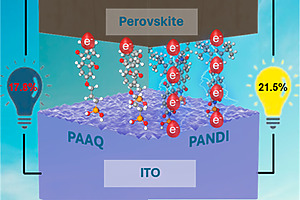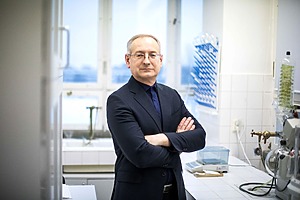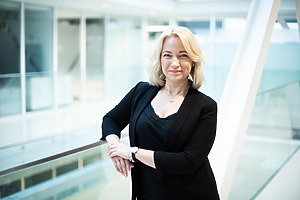Although it is a very thin layer, the role it plays in solar cells is extremely important. Malinauskas says that the best analogy for its function is the subway. “This layer, like an automatic gate on the subway, allows only one type of charge to pass through and continue its journey towards the electrode,” he says.
In this way, self-assembled molecules increase the efficiency of solar cells.
Perovskite solar cell structures differ in the sequence of layers. In the regular structure, a negative charge transporting layer is formed on a transparent substrate, followed by light-absorbing and positive charge transporting layers. In solar cells with an inverted structure, the positive and negative charge transport layers are swapped.
Inventor and KTU PhD student Lauryna Monika Svirskaitė says that the main difference between the two structures is the areas of their application.
“The regular structure is more widely used to study low-cost, easier-manufactured but less efficient solar cells. The inverted architecture allows them to be used in the construction of much more efficient combined devices, also known as tandem devices,” says Svirskaitė.
At the moment, as both structures are being intensively researched, the KTU scientists believe that the new invention is just as significant and promising as the last one.
The strongest inventions in the KTU patent portfolio
The new invention is the result of a collaboration with scientists from King Abdullah University of Science and Technology (KAUST).
“We, KTU chemists, were responsible for the development, improvement, and optimisation of the materials and coating technology, while our colleagues from Saudi Arabia investigated the performance of it in solar cells,” reveals Malinauskas.
Greta Žėkienė, Head of Intellectual Property Management at KTU’s National Innovation and Entrepreneurship Centre (NIEC), says that the demand for this invention is extremely high. In this case, interest in the invention’s industrial use preceded the filing of the patent application.
According to Žėkienė, the search for partners usually starts after a patent application is filed, and most of the time an invention receives attention after the publication of a scientific article or a patent application is released.





